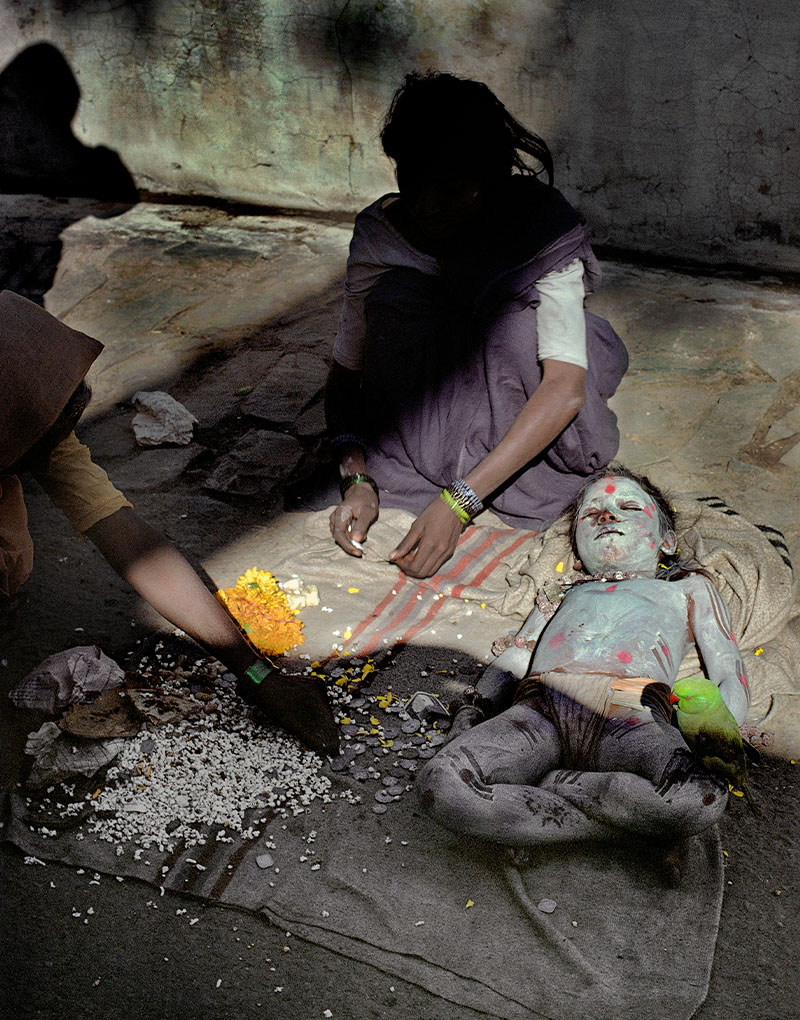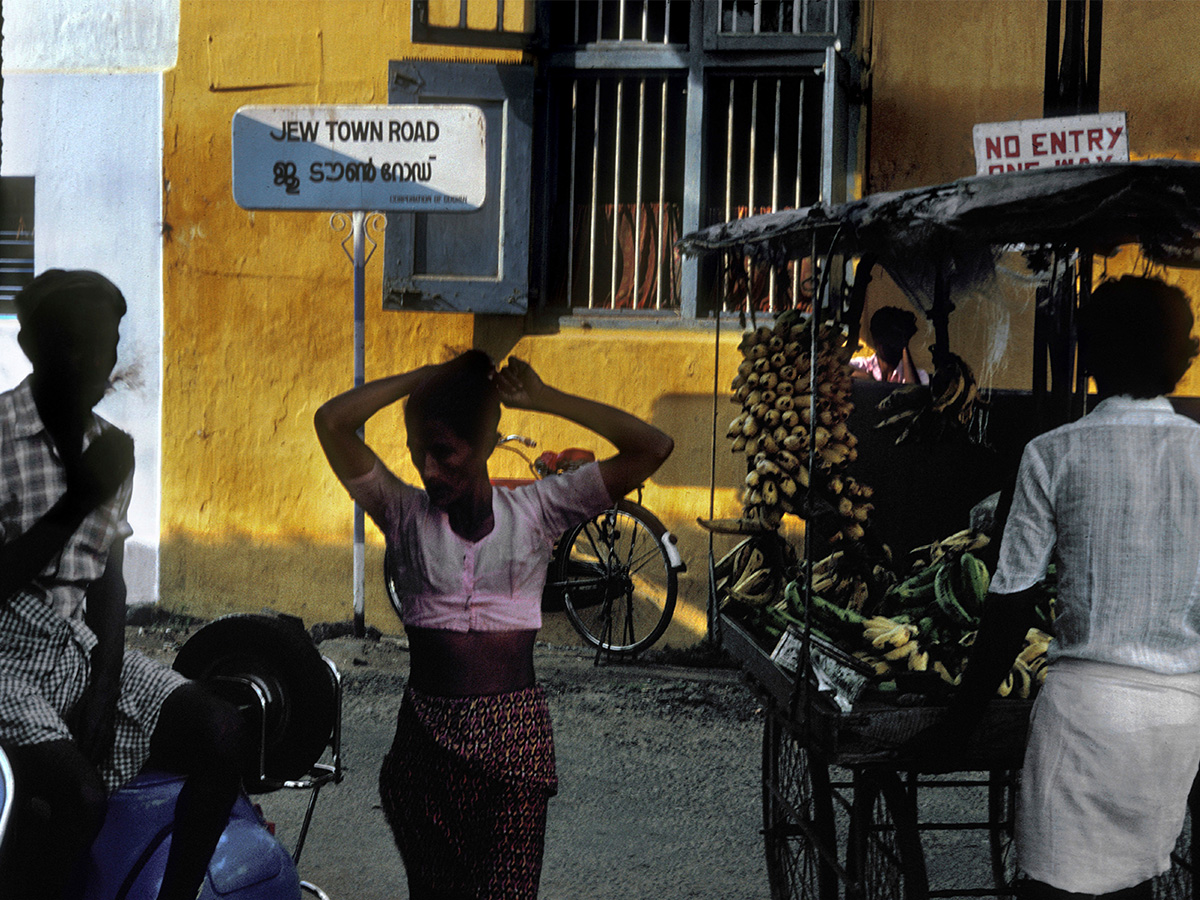ARTICLE
Harry Gruyaert
A Belgian photographer known for creating colour-focussed compositions, Harry Gruyaert is considered a pioneer in the use of colour in art photography, which was otherwise primarily associated with commercial and advertising photography. His images, of deliberately pedestrian subject matter, emphasise the formal elements of a scene — particularly the colour and effects of light — rather than on narrative or symbolic elements. By doing so, he seeks to provide a fresh perspective to everyday sights, divorced from their habitual associations and meanings. For most of his photographic career, he travelled extensively across North Africa, the Middle-East, India, the United States and parts of Europe. His home during much of his itinerant life was a Volkswagen Kombi minibus.
When Gruyaert joined the photography collective Magnum Photos in 1982, Alex Webb and Miguel Rio Branco were the only non-commercial photographers, apart from himself, who worked in colour. That year, on an assignment with Elf Aquitaine oil company, he travelled alongside and photographed cyclists as they competed in the Tour de France. From 1982 through 1983, he drove through Ireland, capturing its sweeping landscapes, popular culture and common recreations. Later that year, he returned to Belgium, using colour this time to photograph the tension between the traditional values and rampant ‘Americanisation’ it faced. He travelled to other countries in western Europe, such as Spain, and in the 1990s frequently visited Moscow. During the next decade, he switched from film to the digital format as he found, after experimenting with other image-making techniques and formats, that it was best suited to bring out the colour and tonality of his work.
Gruyaert has published several books comprising the photos from his travels. Among these are two eponymous volumes on Morocco in 1990 and 2009; two on Belgium titled Made in Belgium (2000) and Roots (2009); TV Shots (2007), Moscow 1989–2009 (2010); Irish Summers (2020); and Harry Gruyaert: India (2021). Gruyaert also published his later collections of his photographic explorations of transience and change, such as Rivages (2003) and Edges (2009) on seascapes, and Last Call (2019) on airports. His work has been featured in a variety of exhibitions, such TV Shots (1974) at Delpire Gallery, Paris; Moscow 1989-2009 (2012) at the Moscow Biennale; and a retrospective show at the Fotomuseum Antwerp in 2018. He received the Kodak Prize in 1976, for the work produced during his travels in Morocco.
As of writing, Gruyaert lives and works in Paris.
Bibliography
Our website is currently undergoing maintenance and re-design, due to which we have had to take down some of our bibliographies. While these will be re-published shortly, you can request references for specific articles by writing to hellomapacademy@map-india.org.







![The façade of the Maneckji Seth Agiary, a Zoroastrian fire temple, is a standout example of the popularity of the Persian Revival Style in Western India in the 19th and 20th centuries. This style was often seen in the architectural patronage of the Parsis, who emerged as one of the most influential mercantile communities of British India. Popular motifs of this style, like the mythical lamasus (winged bulls with human heads) and the faravahar (a winged guardian spirit in Zoroastrianism), drew on the historical art and architecture of the Achaemenid and Sasanian empires from sites like Persepolis, Bisotun, Taq-e Bostan, Naqsh-e Rostam and Naqsh-e Rajab in Persia.
The Parsi community’s adoption of this style occurred largely due to their networks of global commerce and politics, allowing them to access and translate research of ancient Persia into visible symbols that underlined their association with antiquity, imperial power, and art.
نمای آتشکدهی زرتشتی مانِکجی سِت نمونهی بارزی از رواج سبک «احیای [معماری] ایرانی» در غرب هند طی سدههای نوزدهم و بیستم است. این سبک غالباً در بناهایی دیده میشد که پارسیان، از بانفوذترین جوامع بازرگان در هند بریتانیا، بانیشان بودند. نقشمایههای محبوب این سبک، مانند گاو بالدار اساطیری (لاماسو) و فَروَهَر (روح بالدار نگهبان در دین زرتشت)، برگرفته از هنر و معماری شاهنشاهی هخامنشی و ساسانی، در جاهایی چون تخت جمشید و بیستون و طاق بستان و نقش رستم و نقش رجب، بود.
اقتباس جامعهی پارسیان از این سبک بسیار مرهون روابط گستردهی تجاری و سیاسی آنها بود که دسترس به پژوهشها دربارهی ایران باستان و برگردانیدن آنها به نمادهای بصری را ممکن میکرد و بر پیوند پارسیان با دوران باستان و قدرت شاهنشاهی و هنر تأکید میکرد.](https://mapacademy.io/wp-content/plugins/instagram-feed/img/placeholder.png)
